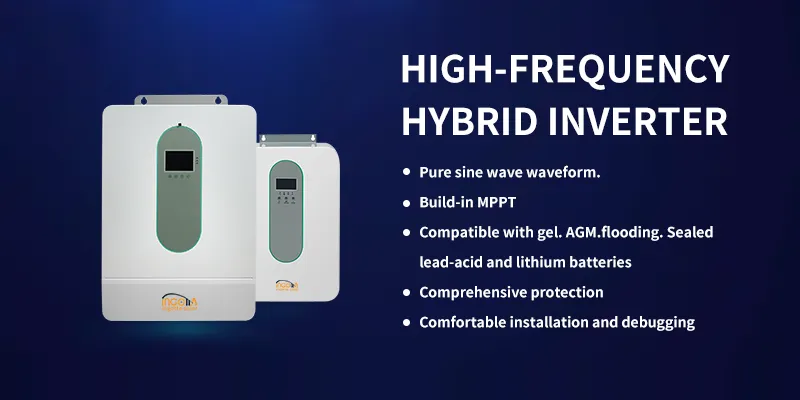High-Frequency Inverters: Powering Modern Electronics Efficiently
In today’s fast-paced technological landscape, the demand for compact, efficient, and reliable power conversion solutions is higher than ever. High-frequency inverters have emerged as a key innovation in this space, offering significant advantages over traditional low-frequency inverters. These devices are essential in applications ranging from renewable energy systems to consumer electronics, providing clean and stable power with improved efficiency and reduced size. This article explores what high-frequency inverters are, how they work, their benefits, and their diverse applications.
What Is a High-Frequency Inverter?
A high-frequency inverter is an electronic device that converts direct current (DC) into alternating current (AC) using high-frequency switching technology, typically operating at frequencies above 20 kHz. Unlike low-frequency inverters, which rely on bulky transformers and operate at lower frequencies (50–60 Hz), high-frequency inverters use advanced semiconductor components like MOSFETs or IGBTs to achieve rapid switching. This allows for more efficient power conversion, reduced heat generation, and a much smaller physical footprint.
How Do High-Frequency Inverter Work?
High-frequency inverters operate through a multi-stage process:
1. DC Input: The inverter receives DC power from a source such as a battery, solar panel, or DC power supply.
2. High-Frequency Switching: Using high-speed transistors, the DC is switched on and off at a high frequency, creating a pulsed waveform.
3. Transformation: The high-frequency AC pulses are passed through a compact, high-frequency transformer to step up or down the voltage as needed.
4. Output Filtering: The output is smoothed using capacitors and inductors to produce a clean sine wave or modified sine wave AC output, suitable for powering sensitive electronic devices.
This efficient process minimizes energy loss and allows the inverter to be both lightweight and powerful.
Advantages of High-Frequency Inverter
High-frequency inverters offer several compelling benefits:
– Compact and Lightweight: The use of high-frequency components eliminates the need for large, heavy transformers, making these inverters ideal for portable and space-constrained applications.
– High Efficiency: With reduced switching losses and improved thermal management, high-frequency inverters often achieve efficiencies of 90% or higher.
– Quiet Operation: The high switching frequency places the operational noise beyond the range of human hearing, resulting in a quieter user experience.
– Enhanced Performance: They provide stable output voltage and frequency, making them suitable for sensitive electronics like laptops, medical equipment, and telecommunications devices.
– Cost-Effective Manufacturing: Advances in semiconductor technology have made high-frequency inverters more affordable to produce at scale.
Common Applications of High-Frequency Inverters
Thanks to their efficiency and compact design, high-frequency inverters are used in a wide range of industries:
– Renewable Energy Systems: They are integral to solar power inverters, converting DC from solar panels into usable AC for homes and businesses.
– Uninterruptible Power Supplies (UPS): Providing backup power during outages, high-frequency inverters ensure critical systems remain operational.
– Consumer Electronics: Used in devices like air conditioners, refrigerators, and entertainment systems to improve energy efficiency.
– Electric Vehicles (EVs): High-frequency inverters help manage power conversion between batteries and motors efficiently.
– Industrial Equipment: They power machinery, robotics, and automation systems where reliability and efficiency are paramount.
Choosing the Right High-Frequency Inverter
When selecting a high-frequency inverter, consider the following factors:
– Power Rating: Ensure the inverter can handle the maximum load of your devices.
– Waveform Type: Pure sine wave inverters are best for sensitive electronics, while modified sine wave models are more affordable for basic applications.
– Efficiency and Cooling: Look for inverters with high efficiency ratings and effective thermal management.
– Safety Features: Overload protection, short-circuit protection, and temperature shutdown are essential for safe operation.
– Brand and Warranty: Reputable brands often provide better reliability and customer support.
Conclusion
High-frequency inverters represent a significant advancement in power conversion technology, offering superior efficiency, compact design, and versatile applications. Whether for renewable energy integration, consumer electronics, or industrial use, these inverters provide a reliable and efficient solution for converting DC to AC power. As technology continues to evolve, high-frequency inverters will play an increasingly vital role in powering the devices and systems that drive modern life.
Table of Contents
